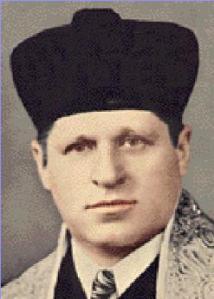Rabbi Yaakov ben Moshe Levi Moelin (Maharil) was born about 1365 and died in 1427. His father, Rabbi Moshe Levi Moelin was the Rabbi of Nayence. Maharil was a pupil of his father and of Rabbi Shalom of Austria, rabbi at Wiener-Neustadt. Maharil won a reputation even in his youth for Talmudic learning and piety, while in problems of ceremonial law his responsa were sought. In 1387 he became the Rabbi of Mayence, instead of his father. At Mayence he attracted many pupils. The most noteworthy of whom was Jacob Weil (rabbi at Nuremberg, Augsburg, and Erfurt), whose responsa were considered authoritative. Maharil and his teacher were the first two rabbis to bear the title 'Morenu,' which was at that time applied to scholars to put an end to the abuses practised by unauthorized persons in performing marriage ceremonies or in granting divorces.
Maharil lived during the period of the Hussite wars, which brought misery upon the Jews of the Rhine, of Thuringia, and of Bavaria, all of whom appealed to him to intercede with God for them. Accordingly he sent messengers to the neighboring communities, urging them to institute a general season of fasting and prayer. The German communities, obeying the call, fasted for seven days (September, 1421). Soon afterward the imperial army and the mercenaries mobilized at Saaz, dispersed, and the very soldiers who had threatened the Jews now came to them to beg bread and received food from them.
Maharil served as a cantor in his community, and he advocated an attitude that should not be changed from the traditional melodies. On the other hand, it is said that he also composed new melodies and there are melodies attributed to him. Some of the melodies attributed to him were used in Mainz until World War II.
Maharil was considered the greatest authority of his time. Communities far and wide sought his advice, his discourses and responsa, in which he emphasized the importance of tradition. In general he followed Alexander Süsslein ha-Kohen (died in 1349), the author of the 'Aguddah' frequently mentioned in the codes, were regarded as authoritative in the congregations. Maharil died occurred before he could publish his responsa, which he had collected carefully, but a part of them appeared at Venice, 1549, and frequently later. His chief work is the 'Sefer ha-Maharil' or 'Minhagim,' published by his pupil Zalman of St. Goar at the request of his contemporaries. This book is frequently quoted in the codes and commentaries and has become a valuable source for later scholars. In addition to sermons, regulations of the ceremonial law, and textual comments, it contains a detailed description of religious observances and rites within and without the synagogue, and outlines, therefore, a faithful picture of the life of the German Jews. It was first published, with various additions, at Sabbionetta, in 1556, and frequently later. It exerted great influence on the Jews of central Europe, being largely responsible for the high esteem accorded to religious tradition ('minhag') in the communities. Maharil frowns upon any changes, and demands implicit obedience to the time-honored observances, even in regard to the liturgical melodies and the piyyuṭim. His 'Minhagim' actually contain many references to the use of certain melodies. A third work, 'Bi'urim' to Yoreh De'ah, is extant in manuscript.
Source: Jewish Encyclopedia.





